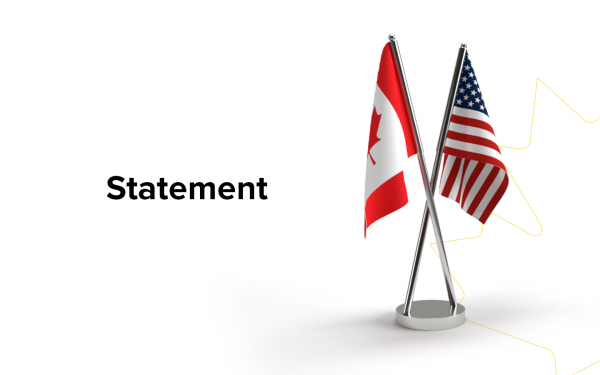Canada needs a new US strategy
Remarks to the Standing Committee on International Trade Study on the Canada-United States Relationship and its Impacts on the Electric Vehicle, Softwood Lumber and other sectors
Madam Chair, committee members, thank you for the invitation to take part in your meeting on the Canada-US relationship.
The Business Council of Canada is composed of 170 chief executives and entrepreneurs of Canada’s leading enterprises. Our member companies directly and indirectly support more than six million jobs across the country and hundreds of thousands of small businesses.
Since our establishment more than four decades ago, the Canada-U.S. partnership has always been a top priority for our members. We played a critical role in supporting the development of the first trade agreement in 1987 and its expansion to include Mexico in NAFTA, as well as with our new framework, CUSMA.
Canada is a trading nation. Our prosperity and living standards depend on it. 60 per cent of our GDP is tied directly to trade. The bulk of this trade is with the United States. As of 2020, it accounted for 73 per cent of Canada’s merchandise exports and 53 per cent of services exports. Two million Canadian jobs are related to exports to the United States.
This relationship is mutually beneficial. Nearly nine million jobs in the United States depend on cross border trade and investment with Canada, and we are the largest or among the largest export customers for most states. From financial institutions and auto part manufacturers to energy, aerospace and high-tech, our members have deep connections to the U.S., creating jobs and benefiting communities on both sides of the border.
The longstanding Canada-U.S. economic partnership has been tested in recent years and is in jeopardy of further deterioration if we do not take steps to strengthen it. Canada needs a new strategy.
Here are three ideas that can help guide the next steps.
Roadmap
With respect to our relationship with the Biden Administration, and as we have heard from Ambassador Cohen, we have a useful tool to enhance bilateral ties, the Roadmap for a Renewed U.S.-Canada Partnership.
This document has considerable breadth, and we already have made progress in certain areas. But as the federal government thinks about its international and domestic policy going forward, including in the upcoming budget, it should consider what actions we can take to make progress on this roadmap, and to accomplish shared objectives between our countries. These include efforts to enhance supply chain resiliency and improve North American competitiveness. There also is considerable scope for collaboration to combat climate change and facilitate the energy transition, including enhancing the cross-border clean electricity grid; expanding production of battery electric vehicles; and stimulating the development of low-carbon opportunities such as critical minerals, carbon capture, hydrogen, and small modular reactors.
CUSMA
Canada is fortunate to have the CUSMA, a modern, progressive, and enforceable framework for trade. We cannot take this agreement for granted. We need to ensure continued support for the agreement through implementation, and by proactively communicating its benefits and presenting it as a foundation for regional competitiveness. Canada must work closely with our American and Mexican allies to promote this shared priority.
Team Canada
We need a new permanent Team Canada to address the challenges of today and in future. This team should leverage people-to-people ties, both in Washington and at the state level, to constantly communicate the shared benefits of Canada-U.S. trade and investment, as well as ensure government, business, labour, and other stakeholders are working toward shared objectives. This requires being proactive rather than waiting for the next trade irritant to arise. The team must develop a plan to advance Canada’s interests and be ready to act upon it quickly and in a coordinated fashion.
Canada faces various challenges, some new some old. While not everything is linked to a shift in trade policy, we should all focus on what we can do as a country to change the direction and prospects of this critical relationship.
The Business Council of Canada and its members stand ready to support efforts to build a more stable and prosperous Canada-U.S. relationship and a competitive North America.
Thank you for this opportunity. I look forward to answering your questions.











